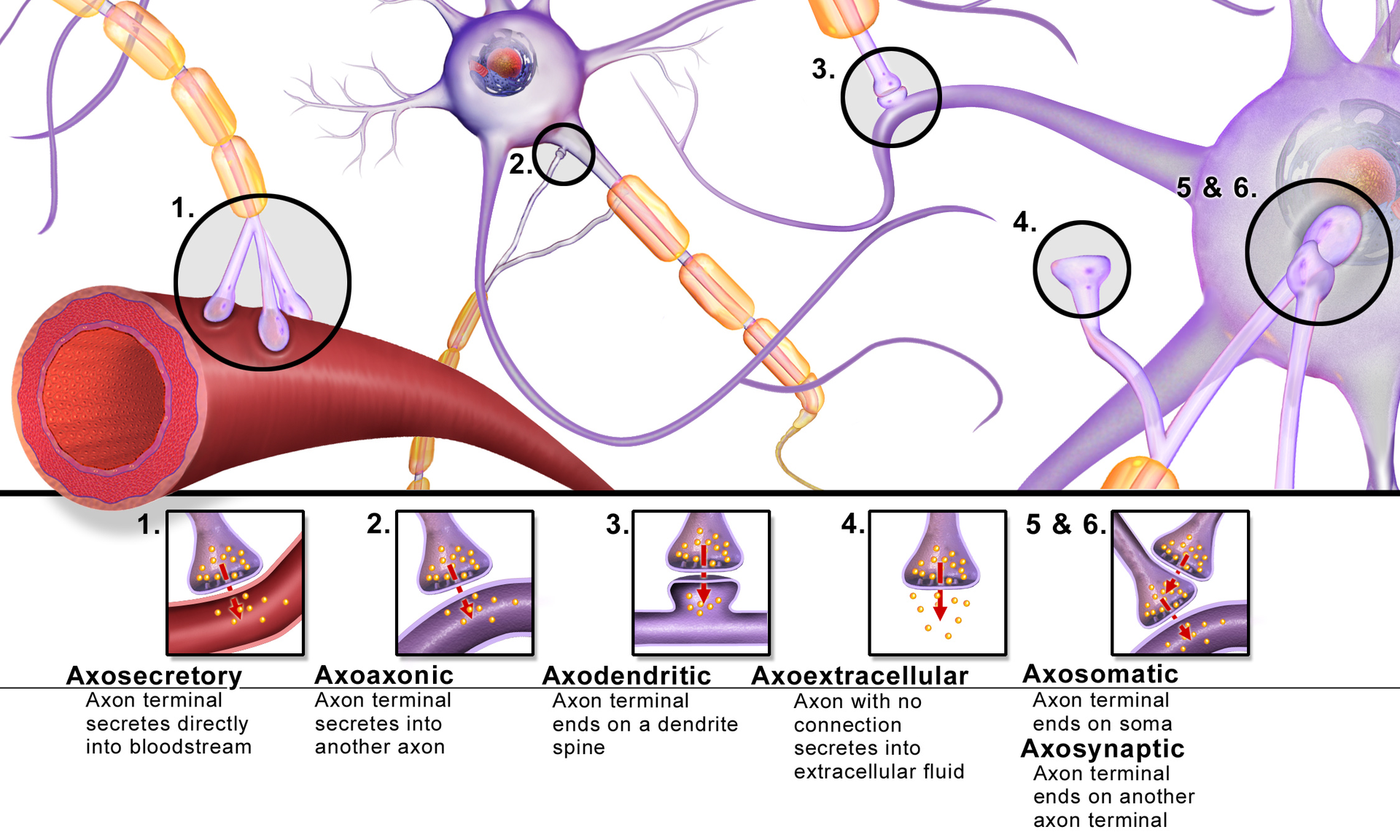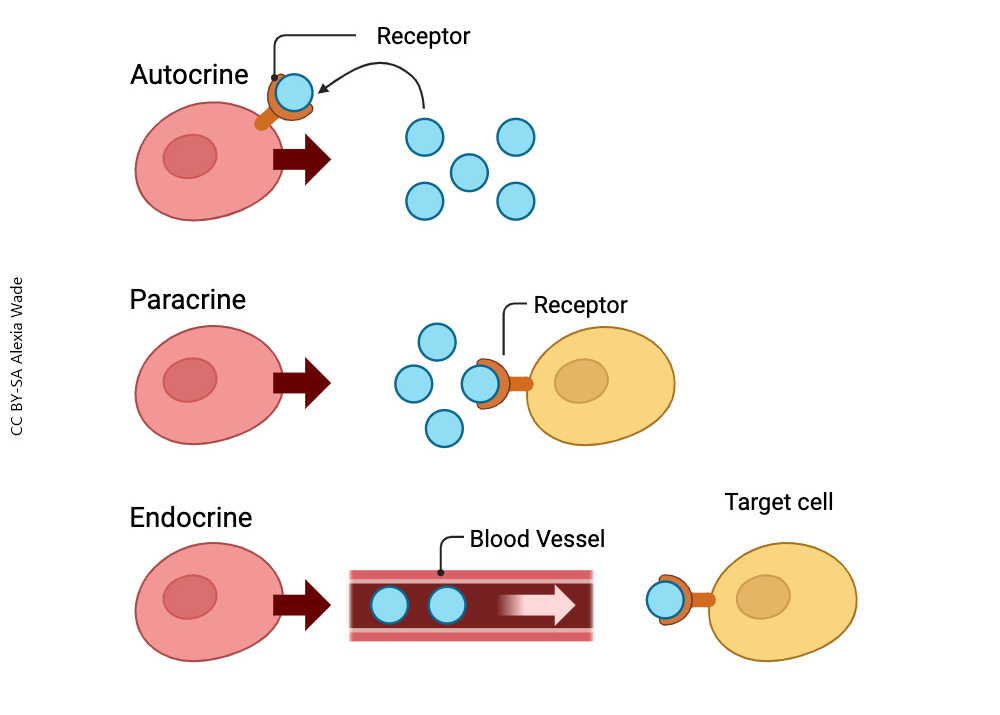Neurotransmitters and Hormones
Objective 13
Discuss the similarities and differences between neurotransmission and endocrine (hormonal) signaling.
Back at the beginning of this journey, I made the point that there was nothing typical about a “typical” neuron. There are 80 billion of them, and each one is unique.
One way in which neurons differ is the relationship between the presynaptic neuron and the postsynaptic neuron. We are taught along the way that all synapses are from an axon terminal to a dendrite — axodendritic. (Note the name of the presynaptic element is first, followed by the name of the postsynaptic element.) Nothing could be further from the truth.
There are dendrodendritic synapses, somatoaxonic synapses, any combination, you name it. The nervous system is an incredibly complex and diverse place. If you were carefully tracking the discussion of spatial and temporal summation in Objective 10, you already figured this out — because if we want to (for example) have a huge influence on a synapse made by an axon, we’ll control it with an axosynaptic synapse so the postsynaptic region where graded potentials are generated is right next to the decision point and there’s no decrement in the graded potential.

Taking just the synapses were an axon terminal is presynaptic, we have a range of possibilities. The axoaxonic synapse is #2. Our old friend the axodendritic synapse is #3. Axosomatic synapses are at #5. The mighty axosynaptic (axoaxonic) synapse is shown at #6.
Two types of synaptic release don’t have a postsynaptic element at all! At #4, we see an axoextracellular synapse. Here, we release neurotransmitter into the extracellular space. When we get to Unit 15, we’ll see a non-neuronal defensive cell of the body, the mast cell, does the same thing, releasing a signaling molecule we’ve discussed, histamine, into the extracellular space when it’s aggravated.
That brings us to the synapse which will play a starring role in one act of Unit 14: the axosecretory synapse. This axon terminal releases signaling molecules, now called a hormone instead of a neurotransmitter, into the bloodstream where the target cell may be more than a meter away.

As you’ve probably figured out already, scientists are good at naming things, so we have three names which you’ll cover again in Unit 14 but which we’ll take a brief look at now.
These are three different modes of signaling, all ending in the Greek word κρίννω, krinnō, “sort” or “separate”.
In autocrine signaling, the cell releasing the signaling molecule is the same as the cell receiving it. It sorts things out by talking exclusively to itself. This is handy, for example, if we make the autoreceptor inhibitory. Then the cell releases a burst of signaling molecule and shuts itself off.
In paracrine signaling, the cell releasing the signaling molecule is right next door to the cell receiving the signal. Neurotransmission is a special case of paracrine signaling.
In endocrine signaling, the subject of Unit 14, the cell releasing the signaling molecule is far away from the cell receiving the signal. The bloodstream is typically used as a delivery route to carry the signaling molecule from where it’s released to the target cell.
Media Attributions
- U13-103 Synapse Types © BruceBlaus is licensed under a CC BY (Attribution) license
- U13-104 Autocrine Signaling © Wade, Alexia is licensed under a CC BY-SA (Attribution ShareAlike) license

